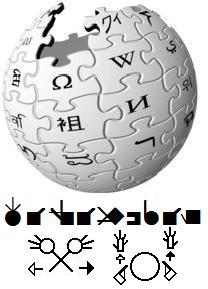 By Jean F. Andrews
By Jean F. Andrews
[Jean’s note: This article was sent to me by Julie Evans, freelance writer.]
- Article by: GAIL ROSENBLUM
- Star Tribune (Minneapolis daily paper)
- January 21, 2013 – 8:47 PM
Adrean Clark insists she’s not an activist, just a hard-working mother who wants to right a wrong. That’s the best kind of activist in my book.
After several pleasant e-mail exchanges, I met Clark last week at a bakery, where we communicated by writing back and forth in her college-rule notebook. If the experience was tedious, the gracious Clark never let on, likely due to years of practice in patience.
Clark, 33, was born deaf to parents who believed that signing would forever lock their daughter into second-class status. So they pushed her to speak and didn’t seek out resources that would help them see American Sign Language (ASL) “as belonging to them, as part of our country’s values,” Clark said.
Clark pushed back in her gentle, focused way — all the way to the White House.
In November, Clark drafted a petition on the White House’s “We the People” website (petitions.whitehouse. gov) to recognize ASL as an official language, including in schools. Some states already allow students to take ASL as a language, but Clark hopes to broaden that option (and get schools to stop calling this homegrown language “foreign”).
She needed 25,000 signatures in 30 days to be taken seriously. She has nearly 32,000 signatures from Washington state to Washington, D.C. It’s an even more impressive feat after one peruses hundreds of petitions on topics from climate change to legalizing marijuana to firearms. Few come close to the support hers has drawn.
Clark is now awaiting a White House response, which a spokeswoman confirmed is coming. Clark knows she might get something like Thank you so much for your impressive effort instead of We’ll get right on it. But she’s thrilled to have tapped into a passion shared by a growing number of people, both deaf and hearing.
“This isn’t about me,” she insisted. “I just happened to hit on something the community needs.”
Clark “is big-hearted and idealistic,” said longtime friend and deaf activist Jeannette Johnson. “She isn’t really the type to be confrontational, but when she takes up a cause, she will commit fully to it.”
Johnson met Clark at Gallaudet University when they were freshmen, then reconnected through the deaf social-media world a few years ago. Together, they are creating a nonprofit organization called ASL for America (aslfor.us).
“ASL is the ‘in’ thing right now,” Johnson said, pointing to ABC Family‘s “Switched at Birth,” which features a main character who signs. Baby Sign is quickly becoming a cottage industry and signing also is helpful to people with Down syndrome and autism, she said.
And during Hurricane Sandy, a surprising star arose — Lydia Callis, New York Mayor Michael Bloomberg’s sign-language interpreter.
“It’s entering the public’s consciousness that ASL is more than just a pretty thing using your hands,” Johnson said. “It’s beautiful, expressive, complex and a ‘language.’ I think people are starting to understand that.”
Clark was born in North Carolina to parents who took the advice of experts and focused on speech and lipreading. But Clark came to breakfast in tears most mornings because she couldn’t communicate.
Her mother finally borrowed a book of signs and the two learned them together. “We’d sign ‘egg’ and ‘more’ and all the good things,” Clark said. “Breakfast became much more calm and positive after that.”
Yet, outside of that kitchen, Clark was discouraged from signing, and praised when she spoke or wrote English. “I wanted to fit in, so I felt embarrassed to sign in public,” she said.
All that changed in high school, when Clark attended the North Carolina School for the Deaf. Her best friend “was a complete ASL geek,” who introduced Clark to the signing styles of famous people, including Patrick Graybill, Clayton Valli, Ella Mae Lentz and Manny Hernandez.
“It was a thrill to see the language come alive in their hands, and to feel a part of a unique linguistic community,” she said.
Those role models encouraged her to release her own creativity. Clark began cartooning and illustrating and is now the author of seven books, including “How to Write American Sign Language” (www.adreanaline.com).
Clark is married to John Lee Clark, an editor and writer of poetry who is deaf and blind. They live in Burnsville with their 13-year-old and 9-year-old twin boys, whom they home-school. The three boys are skilled at ASL, but they’re not the only people Clark is happy to teach.
The morning we met, a painter had stopped by the Clarks’ home. She taught him how to sign the word for “dry.”
“He picked it up quickly,” she said.
We all can, and Clark hopes we’ll consider it. “If every American learned ASL and English from birth,” she said, “imagine the amazing heights we could reach through our new linguistic powers.”
gail.rosenblum@startribune.com • 612-673-7350
Jean F. Andrews is a Reading Specialist and Professor of Deaf Studies/Deaf Education at Lamar University.
Related articles
- Reaching out to the ASL and deaf communities (teresaseacret.wordpress.com)
- For Police Officers: VRS, VRI or Live Interpreter? (deafinprison.wordpress.com)
- Homeless Deaf Uses ASL Relay – From the NYT (deafinprison.wordpress.com)
- Deaf Man Stabbed Multiple Times Because Assailant Thought He Was Using Gang Signs (geekosystem.com)
- ‘Switched at Birth’ Announces Plans for an ‘Empowering’ All Sign Language Episode (hollywood.com)
- Technology capable of turning signs into text set to “empower” sign language users (amplifon.co.uk)
- Best Strategies for Learning Sign Language (handstalktoo.wordpress.com)





